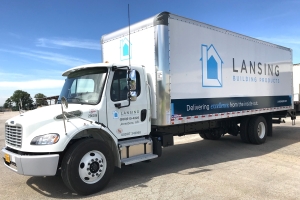
Retention remains a critical challenge in the trucking industry, where high turnover rates can disrupt operations and increase costs. Addressing this challenge requires more than reactive solutions; it demands proactive engagement with drivers.
One of the most effective strategies is implementing feedback loops, which is a systematic approach to gathering, analyzing, and acting on employee insights.
Keep reading to discover how trucking companies can use feedback loops to improve retention and build a stronger workforce.
What Are Feedback Loops?
Feedback loops are a process of collecting information from employees, implementing changes based on their input, and communicating these changes back to them.
When it comes to your company, feedback loops allow you to understand your drivers’ needs, challenges, and preferences, leading to actionable solutions that enhance satisfaction and retention. By making drivers feel heard and valued, feedback loops foster trust and loyalty—two key ingredients for reducing turnover.
Gathering Insights from Current Employees
The first step in creating a feedback loop is collecting meaningful insights from your drivers. Some effective methods for gathering feedback include:
- Stay Interviews: Unlike exit interviews, stay interviews focus on understanding what motivates drivers to stay and what might push them to leave. Consider asking questions such as:
- What do you enjoy most about working here?
- Are there aspects of your job that could be improved?
- Do you feel supported in your role?
- Anonymous Surveys: Online or paper surveys allow drivers to share honest feedback without fear of repercussions. These can include questions on job satisfaction, compensation, schedules, and communication.
- Regular Check-ins: One-on-one or group meetings with drivers provide opportunities for open dialogue. These sessions help management stay connected with their workforce and address concerns in real time.
- Town Hall Meetings: Periodic company-wide meetings give drivers a platform to voice their opinions, share ideas, and collaborate with leadership on solutions.
It’s essential to create an environment where drivers feel comfortable and confident providing feedback. Transparency, trust, and confidentiality are crucial to encouraging honest communication.
Analyzing the Feedback
Once feedback is collected, the next step is to identify patterns and trends. Analyzing the data helps uncover the underlying causes of dissatisfaction or turnover.
For example, recurring comments about pay disparities, long hours, or lack of communication may point to areas that need immediate attention.
Use the insights to prioritize actions that will have the most significant impact. For instance, if drivers frequently mention poor communication with dispatchers, addressing this issue should become a top priority.
Turning Insights Into Action
The success of a feedback loop hinges on a company’s ability to act on the information gathered. Drivers will quickly lose trust if their input is ignored. Here are some strategies to implement changes based on feedback:
- Enhance Onboarding Processes: If new hires highlight difficulties during onboarding, consider revising your training programs to provide clearer guidance, mentoring opportunities, and early career support.
- Adjust Policies and Schedules: Feedback about work-life balance challenges could lead to changes in scheduling practices or more flexible route assignments.
- Improve Communication Channels: If communication is a recurring issue, invest in tools and training that streamline interactions between drivers and management, such as mobile apps or regular team updates.
- Refine Compensation Packages: Concerns about pay or benefits might necessitate a review of your compensation structure to ensure competitiveness in the industry.
Document the changes you make and the rationale behind them. This transparency demonstrates your commitment to improving drivers’ experiences.
Closing the Loop: Keeping Employees Informed
A feedback loop is incomplete without closing the loop—communicating the outcomes of drivers’ input back to them. Let employees know how their feedback has been used and what changes have been implemented.
This can be done through:
- Company newsletters.
- Team meetings or virtual updates.
- One-on-one follow-ups.
When drivers see their suggestions leading to tangible improvements, they’re more likely to remain engaged and motivated to contribute in the future.
The Long-Term Benefits of Feedback Loops
Establishing and maintaining feedback loops delivers significant long-term benefits for trucking companies, including:
- Increased Retention: Drivers who feel valued and supported are less likely to leave.
- Enhanced Loyalty and Trust: Transparent communication builds a stronger bond between drivers and management.
- Improved Workplace Culture: A culture of openness and collaboration fosters satisfaction and productivity.
Additionally, feedback loops provide a competitive edge in recruitment. Prospective drivers are more likely to join companies with a reputation for listening to and addressing employee concerns.
For more advice to stay ahead of the curve in today’s transportation industry, be sure to check out the rest of our Employer Blog posts and connect with us on social media.

 April Smith is the Recruiting Manager with Drive My Way client,
April Smith is the Recruiting Manager with Drive My Way client,  Lansing Building Products Partners with Drive My Way for Success
Lansing Building Products Partners with Drive My Way for Success

